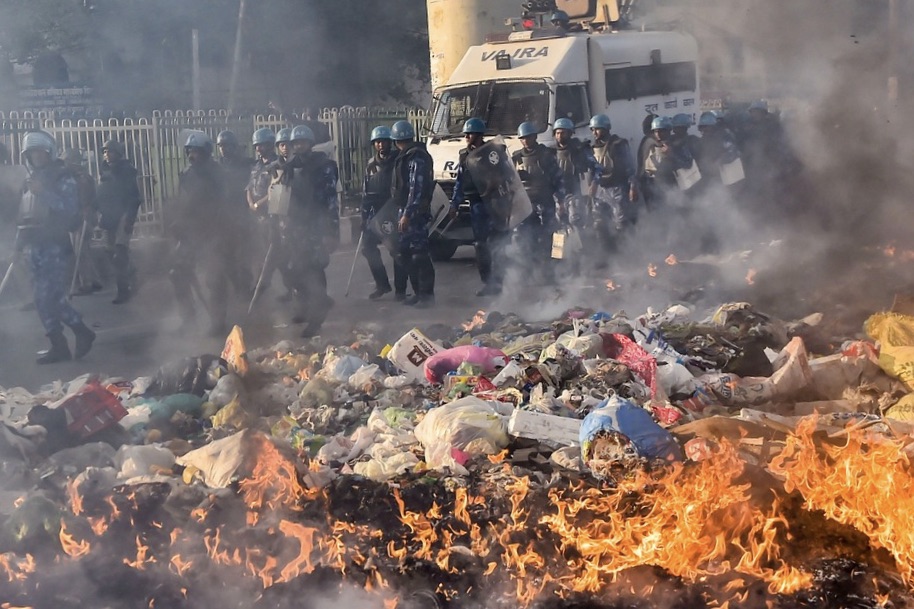
In the thirty years of my practice, their number has decreased and I used to think that there will come a time when none will be left. Fresh out of medical school, brimming with bookish knowledge, more idealistic than worldly wise, it bothered me no end. But slowly, I got used to it. Back then, it was common for my elderly patients to calculate their age from the riots of partition, as in” Maar kaat ke waqt mein dus saal ki thi.” Being a border state it was expected that it bore the brunt of the violence surrounding our independence. But I still found it disconcerting that it was all they remembered of that time. Probing questions about the jubilation of becoming a free nation, the euphoria of sending the Britishers packing, the celebration and the proverbial distribution of sweets were greeted with stony silence.
And then one day a patient asked me how it mattered, “Raja kaun hai kya farak padta hai, hum toh rank hi rahenge, khet tab jot te the, khet ab jot te hain.” Althoughhe had a point I still found it unsettling that for many people in this part of the country 1947, is called ‘maar kaat’ andbrought only tragic memories.It is sad that the birth of independent India was overshadowed with labour pains of such magnitude that the baby itself lay ignored.
As I mentioned, the number of people who remember the partition has declined over the years. But recently, quite unexpectedly, a Sikh patient told me that he was about twelve years old at the time of the riots. I looked at him with surprise. He seemed around forty, maybe a well preserved fifty but not a day older than that. And then it dawned on me. He was talking about the riots of 1984, which followed Smt Indira Gandhi’s assassination. A chill ran down my spine as I realised that there will never be a time when such people do not exist. With mob violence becoming a recurring theme of the world, our society will always have people fighting the demons of the past. People who were caught in the crossfire and scarred for life. People whose life is divided into a before and after by a tragic event which was not of their making.
I am not a social scientist but interact with enough people to understand that such incidents have ramifications beyond the individual. This is a social trauma and affects the way we think and function. Even if it is not outwardly evident the hurt lingers on and becomes the victim’s identity. The thread of trust is broken, irreparably, in most cases. Victims feel betrayed and have difficulty in trusting friends and neighbours. What is worse is that this distrust is wittingly or unwittingly passed down to their children. So it is not only detrimental to the social fabric but ruins the mindset of future generations as well.
The repercussions don’t end here. It affects economic growth too. People avoid places associated with unpleasant memories for education or livelihood. The worst fallout is the creation of ghettos. Victims start believing in the safety of numbers and gravitate towards their own kind. In rural Haryana, it is common to have whole villages dominated by one caste. Even in urban India such separation exists with entire colonies inhabited by a particular sect. The segregation of society on the lines of religion and caste is never good. Seeking solace among their own with a thinly disguised resentment towards ‘others’ leads to a situation where the slightest rumour can cause ruin. Birds of the same feather flocking together works only for birds and the bird brained.
These incidents of violence, communal or otherwise, are on the rise. With prejudice and preconceived notions deeply etched in our intellect, distrust and suspicion in our hearts, discontent and resentment brewing in our minds and our blood simmering with contempt, it is not surprising that we boil over at the smallest provocation. We just need an excuse to vent our anger on those whom we perceive as the cause of our misery.
Till the time we fully understand and eradicate this mindset the only solution is to forgive, forget and move on. Resilience, the ability to bounce back is our only saviour. Personal resilience is more common than perceived and almost half of the subjects in a study conducted by George Bonanno had it. It is not a lack of emotion but the ability to function despite the grief, a quality which needs to be bolstered . Such pliancy is aided by the belief that there is a greater purpose to life and that negative experiences lead to learning & personal growth. All major religions teach this and here in lies the irony. Religion, which is often at the root of rioting, if used properly helps heal the trauma it caused! In any case it is reassuring that, even in the worst circumstances a sizeable minority is available to support the traumatised. Social order thus falls on the shoulders of the common man who is able to see the futility of communalism and understands Gandhi’s words, “This lawlessness is a monster with many faces. It hurts all in the end, including those who are primarily responsible for it.”
( published in my column in the Tribune on 28/8/2016)